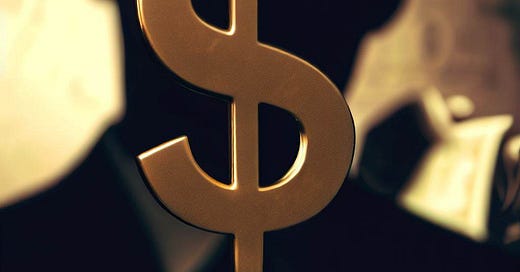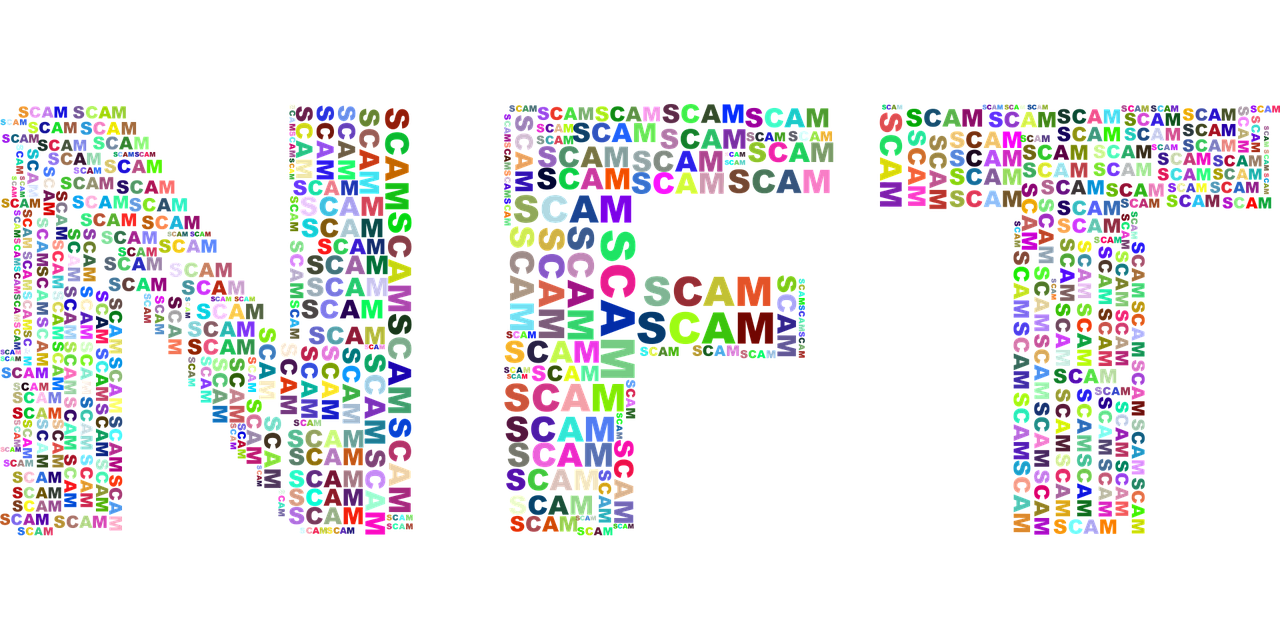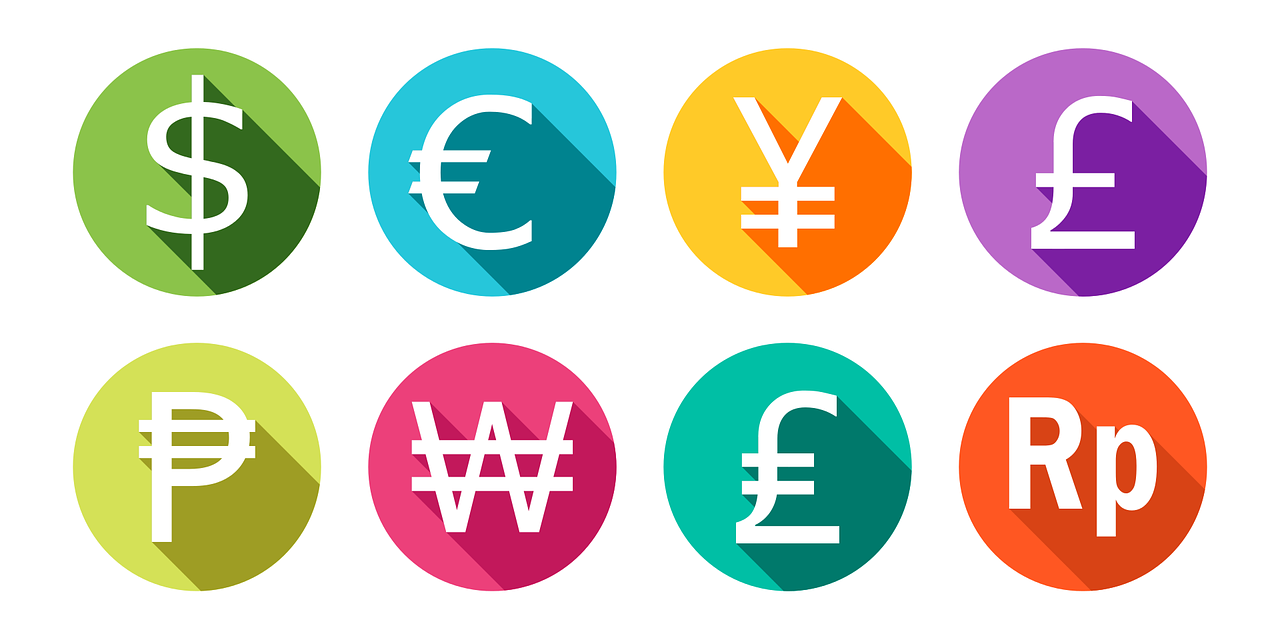Money - Dead Reckoning Part Two
The US appears hostile to crypto, but blockchains hold the future of money. What's behind the mask? It's time to take The Sniff Test.
The Threat to Dollar Dominance
The battle for the future of money is underway and with it the struggle to be the dominant power for the rest of this century. The US leads, but its fractured political system does not appear ready to respond to rapid technological change. While we are liable to overestimate how much things such as AI and blockchain will progress over the next year, we generally underestimate how different things will be a decade from now.
Dollar dominance puts the US at the centre of the world’s financial system. Countries accumulate dollars through international trade and America is the natural place to invest them, which reinforces its financial leadership. This allows the US to watch the movement of money and interrupt it at will, as well as giving it control of the technology behind financial flows.
This causes resentment and resistance. Russia’s US assets have been rendered worthless unless it recycles them through a neutral state, much as its oil flows through India and other opportunistic nations in circumvention of sanctions. Out of necessity, alternative routes are being created using different currencies, with the main beneficiary being the Chinese yuan.
China itself watches on, conscious of a coming conflict with the US. It lacks the financial or military might for that today, but it plays the long game. Worming away at the dollar’s dominance is a key part of that strategy.
The Global Competition for Money
London remains at the heart of global finance long after the dollar replaced sterling as the global currency. The UK is the largest hub for trading foreign exchange and interest rate derivatives, and is a destination of choice for offshore dollars looking to avoid the scrutiny of US authorities. The UK is heavily invested in dollar dominance, but retains its ability to move with the times.
The latest prize up for grabs is to be where crypto currencies move in and out of the conventional financial system and, by extension, the leading player in blockchain technology. Less than 10% of bitcoin trading is US-based, which throws the competition wide open. Singapore and Hong Kong are circling and earlier this year the EU passed significant legislation. This lays out a regulatory regime for digital assets that removes the risk of future prosecution, which still hangs over those doing business with Americans.
Recognising this, US enthusiasm for attacking crypto is fading. Having hobbled the first wave of industry pioneers, the SEC is set to bless mass market ownership of digital assets, provided they are managed by leading US financial firms. Blackrock, the world’s largest investor, has filed for a stock market fund that holds bitcoin, and only once in 550 attempts has the firm been turned down for this type of vehicle.
The contest is about how best to legitimise crypto by bringing it into the mainstream. By making it one of many different assets available for public investment, the authorities gain control and marginalise the shadier elements in the space. The purists will note that because you don’t own digital assets, but rather a fund that invests in them, then you remain reliant on the state. That’s the point and probably the only way that crypto goes mainstream.
The Future of Money
A blockchain is a global platform for the simultaneous exchange of goods. When you buy something there are two parts to the transaction. The first is the exchange of money and the second the transfer of whatever you bought. Blockchains are a faster and cheaper way of doing the money part. They can also be used for certain goods.
Digital art received a spike of interest as a result of the money sloshing around during the pandemic. This medium allows both the transfer of money and of the goods on blockchain, and consider it as a test run for how digital assets may trade. The fact that monkey pictures aren’t worth what they once were is irrelevant for the value of the non-fungible token technology underpinning them.
Anything where ownership is removed from the underlying asset, for example shares in a company or the deeds to your house, may be represented, traded and transferred on chain. The company and the house don’t move.
When ownership of your house is represented by code on a blockchain, then other things may be written into that code. The deeds can transfer to you automatically when you repay your mortgage, or transfer to a buyer once they pay. Code is a series of ‘if’ and ‘then’ statements, which is how most investing is done and most contracts work.
Of course, many contracts are convoluted with ‘if’ and ‘then’ followed by ‘but if’ something else ‘then’ something different. The challenge automating more complicated contracts is having an oracle, which is an authority trusted by both parties to determine when an event has happened.
Consider insurance for crop failure. The farmer and the insurer may agree that when a reputable global weather agency says temperatures were above a certain level, or rainfall less than a particular amount, the insurer pays the farmer. Alternatively, a third party could confirm that the crop yield fell below the level required to trigger the insurance. Both requirements could be coded into the contract, along with the proof, and when met money would transfer automatically.
Existing law is ambiguous and lawyers make their money interpreting it, playing the role of the oracle in the above example. On blockchain the code is law. Any blockchain that remains under the control of the state and therefore national laws, will continue to be vulnerable to rewriting of the code. Those who want definite decisions and instant transactions, therefore, will favour decentralised blockchains beyond the control of a sovereign nation.
This does not mean that governments lose the ability to see who is doing what. It is a myth that Bitcoin is anonymous and the best way for criminals to operate. Every transaction that ever happened is recorded on chain and accessible to anyone. When anonymous accounts move money back into dollars they can be identified. Laundered cash is untraceable and I bet the FBI loves crypto.
What the authorities do lose control of when blockchains are neutral is the ability to sanction parties to a trade and stop it happening. This is appealing to crypto bros with an inherent distrust of the state and particularly attractive to rivals of the US.
The Future of Central Banks
The all important question remains what is the money that will be used to settle these coded contracts that are the future of trade and transactions.
The current race leader is stablecoins. These are digital tokens that represent a currency, typically the dollar and may be used on multiple blockchains, removing the need to own the individual tokens of each chain. The stablecoin operator uses dollars deposited with it to buy assets that support the value of their coin. This should be attractive to the US, because it creates huge demand for high quality and liquid dollar assets, which is what the US government issues.
The US is in the process of litigating most stablecoins out of existence. While this is interpreted as an anti-crypto measure, it is more likely to be a way to consolidate the industry to a preferred supplier that acquiesces to US law. Perhaps in the next decade a stablecoin operator will surprise everyone by being granted a banking licence. That threat will keep JP Morgan in line.
Provided the operator agrees to check the identity of its clients and make it available to the authorities, it should be full steam ahead. Remember, the US is happy for Joe Public to punt around in the value of bitcoin, provided it does so through a US financial company.
Central Bank Digital Currencies are an alternative to stablecoins on chain. These would negate the need to manage the value of a stablecoin against the dollar and cut out the middle man. But it’s not that simple.
In order to gain the benefits of digital money, it needs to be programmable so that contracts can be written in it. For state-controlled blockchains, this may mean too much access to the underlying code, including by nefarious actors in hostile countries. North Korea is believed to be funding its nuclear programme through hacking weaker cryptocurrencies, which ironically is speeding up the transition to a single, government-approved operator.
Equally, the point of blockchains is that they are fast with near infinite capacity. Both Bitcoin and Ethereum fall short, which is why a series of competing chains appeared in recent years. The shortcomings are mostly due to the security measures that protect Bitcoin and Ethereum and are the source of their acceptance and longevity. Security is also the cause of Bitcoin’s massive energy consumption.
Newer technologies, known as layer 2s, have been developed to boost the capacity and speed of both networks. These batch up transactions and periodically put them back on the parent chain. They are lightning fast with minimal energy use. Ethereum has the advantage because it is designed as the world’s computer, while bitcoins have the primary purpose of holding their value over the long term.
The US must make the digital dollar the preferred means of backing stablecoins to maintain the primacy of its currency. If it doesn’t, others will step in.
The Role of the Eurodollar
One of the innovations that kept London at the heart of global finance was the development of the Eurodollar market. This refers to the vast quantity of dollars that circulate outside of the US and are the source of 90% of international loans. Originally they were held mostly in Europe, hence the name, but nowadays dollars are earned by all exporting nations, with China, Japan and South Korea notable among them.
Banks all over the world tap into these dollars and can operate in the currency beyond the reach of the US. All that is needed is a London registered bank to legitimise the reintroduction of this money into the US sphere of influence. There are over 250 foreign banks in the UK and they control over a third of the financial assets here.
Eurodollars are an alternative means of backing stablecoins if the US is too late to the party. From here it is a short step to a digital yuan, which already exists, or euro being the mainstay of stablecoins. Testimony before Congress has indicated that the US has around four years to act. This is the prize that countries seek as they open up to crypto currency trading in their existing financial centres.
Tom Cruise, The Joker and The Sniff Test
Part of the reason for writing The Sniff Test is a fascination with the idea that when you know something then you are probably being fooled. This idea is attributed to Al Capone, but I prefer The Joker’s look.
Remember, knowledge is the best existing explanation for the evidence. The transition to a digital currency is onerous in the West, where the sunk cost in the existing financial architecture is huge and many smaller banks may not be able to afford to switch. Yet if replacing this architecture is the price to retain monetary sovereignty, it is worth paying.
It is barely conceivable that whatever its instincts about crypto, the US will surrender sovereignty by virtue of failing to act. The stakes are simply too high. It is more likely that it is masking its true intentions behind a veneer of hostility to crypto, with compliant fools in media and politics providing the masquerade.
The US has an increasingly concentrated banking system, although nothing like the UK. The 4 banks that went bust earlier this year represent a similar share of the economy as the over 10,000 that closed during the Great Depression. The US response to the latest rescues was to allow JP Morgan to go above the longstanding 10% limit on deposit market share. A much more concentrated banking system might be necessary to herald the age of digital money.
We will have to wait for June of next year to find out how Tom Cruise resolves the control of the all powerful AI. It may take slightly longer to discover the future of money. One thing we do know is that while Hollywood has the option of having Cruise destroy The Entity, no one is destroying money or its digital equivalents.










One of the fundamental rules is that where it is needed, a money system will be improvised. One thing which is accelerating the use of digital currencies is the ongoing collapse of correspondent banking relationships under the weight of regulatory costs involved in AML and anti-terrorist financing. Out here in the Caribbean, the cutting of longstanding correspondent banking relationships is very obvious, and is a very clear obstacle to the development and prosperity of the region. In response, you see a plethora of digital currencies emerging. So, for example, Jamaica has developed the JAM-DEX, (sure a tuff gong!).
In the Eastern Caribbean, you have a group of central banks developing the Dcash (de cash, man!), apparently meant to be doing the business in 7 small nations.
If traditional imperial banking relationships no longer straddle the world, my guess is that digital/cryptos will take their place. . . simply because they have to.
It was always going to be worth waiting for part 2 before commenting so many thanks for an excellent read
In trying to understand the future if any of US$ hegemony and the geopolitical jigsaw puzzle being put together, the picture developing looks to me to have a highly turbulent short to medium term that likely results in the death of the old empire and rise of an initially fractious multi polar world
The creation of the Eurozone, which sceptics such as I have always viewed as another attempt by Europe to re establish its old global hegemony, has created chronic global imbalances that are now unwinding as their engine room of the previous decade worth of growth slides into a depression from which it likely does not emerge at least not in the current European construct, and the market wakes up to just how brittle the Eurozone is as a single bloc
In global geo politics, the battle therefore must be viewed as a two front war that the globalists find themselve in, and are likely to lose.
The conflict in Ukraine which was supposed to result in the end of Vladimir Putin and the break up of Russia a la the Balkans, instead looks likely to end in the dissolution of the state of Ukraine and the consolidation of rising power of the BRICS bloc... Furthermore, if the US and Europe cannot arm Ukraine sufficiently to defend themselves against Russia, what chance do they have if the conflict against China does ramp up ?
And who exactly is looking for a fight with China ? The top New York banking fraternity of JP Morgan and Jamie Dimon appear to see a quite different picture to the one created by the Biden administration as evidenced by their recent move into onshore Chinese markets (which can only be done with the blessing of Beijing (https://www.prnewswire.com/news-releases/jp-morgan-asset-management-receives-regulatory-approval-for-100-ownership-of-china-joint-venture-301727014.html)
What is the relationship between the ECB and the Fed ? There cannot be two masters at the top of a globalised CBDC pile yet the Euro was created to that end. When we look at UST foreign holdings, we immediately look at China (which has reduced to $900bn but under no circumstances yet will reduce to zero) and Japan ($1.1 trillion combined with YCC makes its role in current sovereign credit spreads very interesting - Yen carry trade into Euros ? )
But the two most interesting current positions in UST are the UK ($700bn and rising) and the Eurozone ($1.4 trillion spread across member states, but should be viewed as a single Eurozone position)
The EU's post 2011 dependence on German exports concomitant with fiscal compacts meant they built up a large US$ position likely printed by the Yellen led Fed, which they used to buy the USTs, which likely would have destroyed the Fed had it been allowed to continue. Problem is they bought them at the zero band so given the change of Fed regime to Jerome Powell, like a number of San Francisco Fed regulated banks, are very long and wrong in US duration !
Is this why the Bank of England has been buying USTs (added $100bn last year and continues to do so) whilst the ECB manages its own credit spreads to try and maintain the illusion of solvency ?
The Bundesbank auditors pointed out their client may need a bailout as a direct result of ECB bond buying (https://www.bloomberg.com/news/articles/2023-06-26/bundesbank-may-need-bailout-on-ecb-bond-buying-auditor-says?leadSource=uverify%20wall) and the ECB remains the most hawkish of central banks despite the slumping German economy and soaring unemployment
So the direction of the future of money appears to be a BRICS gold/commodities backed CBDC and a US$ domestic CBDC and stuck in the middle of this is Europe How that looks depends on whether or not the EU and the Eurozone survives !!